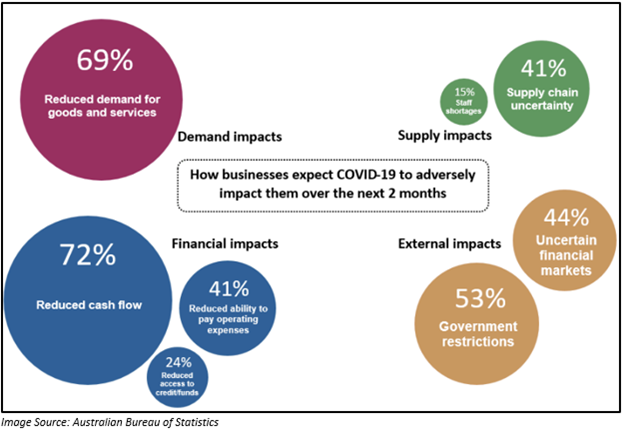Investing is not about deploying one’s capital in one “great” stock but investing in a collection of stocks that meet one’s investment criteria. It boils down to choosing a style of investment that suits one’s psychological profile.
While choosing the right investment strategy, one must have an answer to some of the points like:
- The duration of the investment.
- Expected Return.
- The Risk Appetite.
- Choosing the right asset to invest.
The answers to these would help in designing a sound portfolio that allows the investor to be successful in the long haul.
While planning the investment strategy, the first step is determining the breakdown of your investment. By breakdown, we mean the proportion of investment that would be used in cash, stocks, and fixed income.
The proportion of the investment would also depend on the type of investor. A person who is conservative in nature prefers more fixed income securities over stocks. On the other hand, a person who is aggressive in nature would prefer more equities over stocks because of his/her risk appetite. There is a third category of investor, a balanced investor, who prefers investing 50% of his investment in growth assets while remaining 50% in cash and fixed income.
Investment strategy types; momentum and contrarian:
There are many different types of strategies available for investors to pick and choose from. The two popular ones are momentum and contrarian strategies. In a momentum investment strategy, the focus is on the recent to long term trend of the asset and the inherent agreement to the views of the market.
On the other hand, the contrarian investment strategy is just the opposite of the momentum investment strategy and the investors tend to take the opposite view of the market consensus and are of the view that market is mispricing on both the extremes.
Momentum Investing:
In momentum investing, there are a set of rules based on the technical indicators which dictate when an investor should enter and exit the market for a particular stock. There is a bet on the liquidity momentum to be on the same side as that of the trend.
Contrarian Investing:
As highlighted above, contrarian Investing is the opposite of momentum investing. In contrarian strategy, an investor enters the market at that point when others in the market feel excessively negative or positive about any stock.
Earlier, we have covered different investment strategies like Contrarian Investing, Dividend Strategy, Sector-Specific Investing Strategy, Avoiding Behavioural Biases Strategy and the Momentum Trading Strategy.
In this article, we would focus on the contrarian trading strategy.
In contrarian strategy, the investors are of the view that the stock market has a way of constantly overvaluing prospects of highly regarded businesses and consistently undervalue those stocks that appear to have dull outlooks.
David Dreman, who is the founder and chairman of Dreman Value Management LLC (Dreman), is a pioneer of the contrarian investment. Over the past 30 years, he has been at the leading position of research into contrarian value investing as well as behavioural finance. Since he started his business, the firm follows his contrarian style of investment.
Contrarian Investment Approach at Dreman:
The investment team at Dreman follows a disciplined, bottom-up, low P/E approach for making any investment decision. Contrarian investors invest in stocks that have low P/E ratio, with strong fundamental as well as historical investing growth.
At Dreman, the selection process includes three steps:
Step 1: The first step includes value screening, in which the stocks are shortlisted based on low P/E ratio, low Price to Book Value and low Price to cash flow and are undervalued by the market or have faced declining profits and prices tend to correct more than fundamentally called for due to market overreactions.
Step 2: In the second step, a rigorous fundamental analysis is undertaken to understand which stocks have the potential for future growth. In this, the best stocks are selected while eliminating value traps and stocks with worsening fundamentals.
Step 3: In the third step, which is the investment decision phase, the final decision on the purchase or sale of the stock is made and executed.
Just like the systematic selection process, contrarian investors have a systematic sell discipline. Contrarian investors sell their stocks when:
- The stock’s valuation rises above the intrinsic value.
- The stock valuation exceeds that of the industry.
- Stock experiences weak or declining price momentum or weak fundamentals.
Contrarian Investment Strategy Features:
Contrarian investment is all about going against the consensus. The biggest advantage of this type of investment is it delivers stupendous risk reward ratio when successfully executed. Some important points to consider while choosing this style.
- Screen for in stocks which have gone down the most lately.
- look for those sectors and markets that have been impacted the most. Within such sector look for those companies which are penalised even when these companies have relatively sound fundamentals.
- Along with the second point mentioned above, do your research, and look at the outlook and the underlying strength of these companies, which can bring them back to track when the market is favourable. Be clear of the catalyst that might induce the change in market perception from bearish to bullish or the vise versa.
- Think long term; usually the crowd tends to focus too much on the short term, by increasing one’s time horizon one can increase the edge. It took over two years for Michael Burry’s idea to fructify. (Michael Burry made millions of dollars by betting against the crowd during the 2008 GFC).
- As per Michael Mauboussin, the author of “The Success Equation: Untangling Skill and Luck in Business, Sports, and Investing”, one should adopt contrarian investing only to follow what other are not following.
- Adopting a contrarian style of investment requires patience to realise the full value.
COVID-19 and Present Market Situation:
In the present time, we all are aware of the market situation due to COVID-19. Due to COVID-19 outbreak, many businesses are impacted severely, the share prices of most of the stocks have fallen as people are selling their holdings out of fear.
On that front, keeping in mind the methodology followed by the contrarian investors and knowing about the strategy, let us look at ASX listed sector impacted by COVID-19.
ASX Sectors Impacted by COVID-19:
As per the recent report released by the ABS on 4 May 2020, 7 out of 10 businesses have reported a drop in their cash flow by 72% and the demand for goods and services dropped by 69%. These companies expect an adverse impact on their business in the coming 2 months.

As reported by ABS, 2 out of 5 businesses expect uncertain financial markets due to COVID-19.
Below is the list of businesses from the various sector that expects business impacts due to COVID-19.







